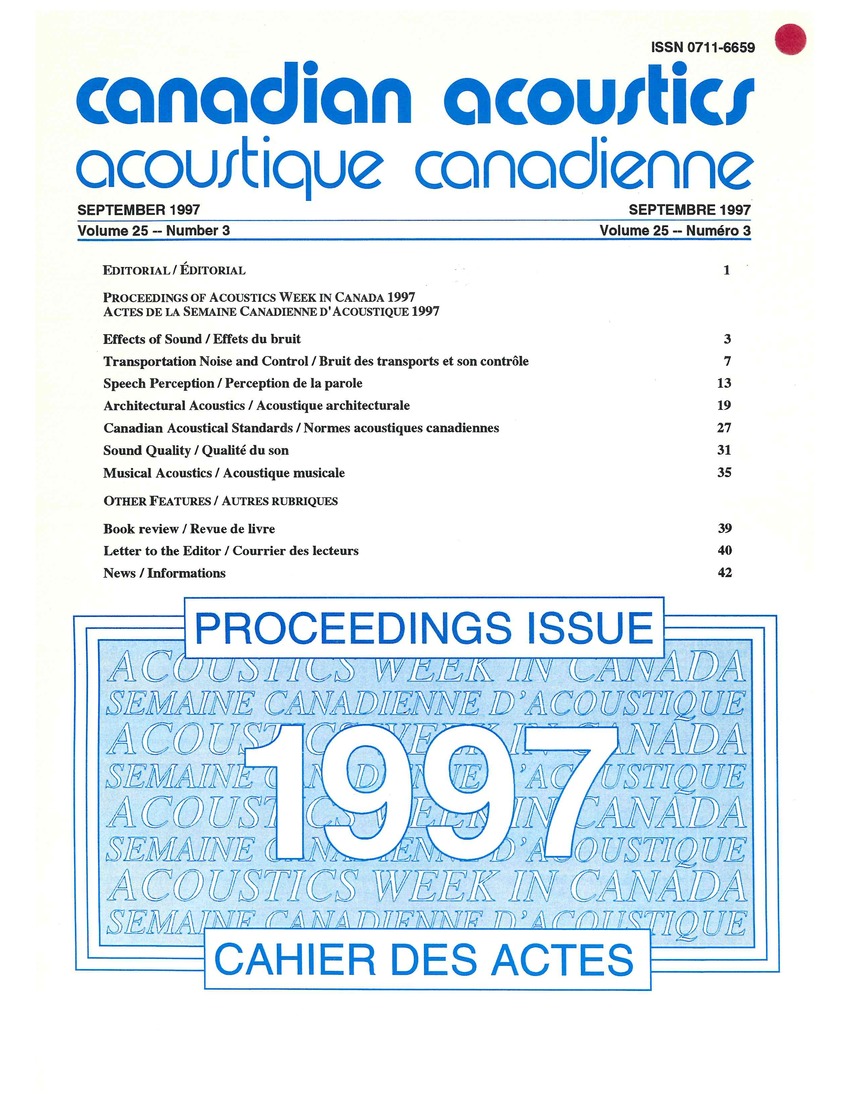Patterns of Tension/Relaxation in Music: A Consideration of Psychoacoustic and Cognitive Influences
Résumé
Perceiving patterns of tension/relaxation is essential to the comprehension and appreciation c>f music. Since music exists both as a collection of psychoacoustical events and as a system of hierarchical relationships understood at a cognitive level, it is reasonable to explore different influences on the perception of tension. To what degree do psychoacoustic and cognitive factors influence listeners' perception of tension in music? Recent work (Bigand, Pamcutt, & Lerdahl, 1996) has addressed this question using short chord sequences. The present studies pursue the issue using an excerpt of real music that has received much attention from music theorists—the first nine bars of the second movement of Beethoven's Waldstein (Opus 53) piano sonata. We evaluated the psychoacoustic dissonance conveyed by isolated elements of the excerpt and compared perceived dissonance with perceived patterns of tension/relaxation conveyed by the musical context to musically sophisticated listeners.Fichiers supplémentaires
Publié-e
Comment citer
Numéro
Rubrique
Licence
Author Licensing Addendum
This Licensing Addendum ("Addendum") is entered into between the undersigned Author(s) and Canadian Acoustics journal published by the Canadian Acoustical Association (hereinafter referred to as the "Publisher"). The Author(s) and the Publisher agree as follows:
-
Retained Rights: The Author(s) retain(s) the following rights:
- The right to reproduce, distribute, and publicly display the Work on the Author's personal website or the website of the Author's institution.
- The right to use the Work in the Author's teaching activities and presentations.
- The right to include the Work in a compilation for the Author's personal use, not for sale.
-
Grant of License: The Author(s) grant(s) to the Publisher a worldwide exclusive license to publish, reproduce, distribute, and display the Work in Canadian Acoustics and any other formats and media deemed appropriate by the Publisher.
-
Attribution: The Publisher agrees to include proper attribution to the Author(s) in all publications and reproductions of the Work.
-
No Conflict: This Addendum is intended to be in harmony with, and not in conflict with, the terms and conditions of the original agreement entered into between the Author(s) and the Publisher.
-
Copyright Clause: Copyright on articles is held by the Author(s). The corresponding Author has the right to grant on behalf of all Authors and does grant on behalf of all Authors, a worldwide exclusive license to the Publisher and its licensees in perpetuity, in all forms, formats, and media (whether known now or created in the future), including but not limited to the rights to publish, reproduce, distribute, display, store, translate, create adaptations, reprints, include within collections, and create summaries, extracts, and/or abstracts of the Contribution.


